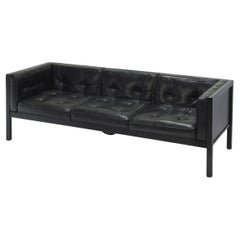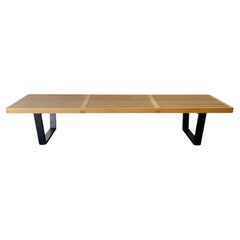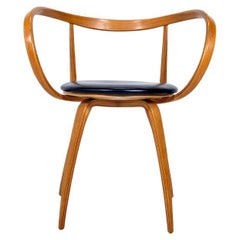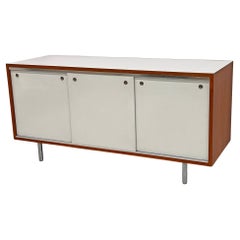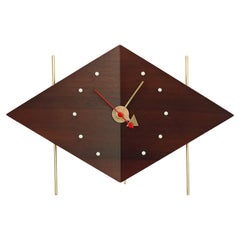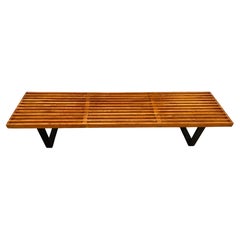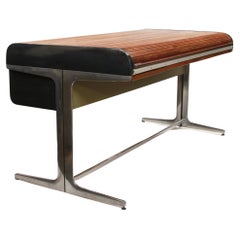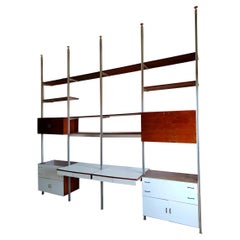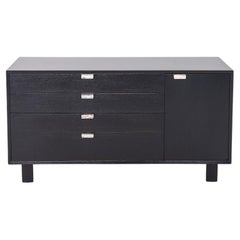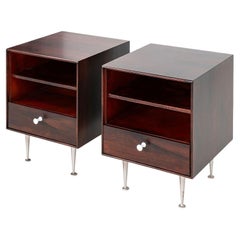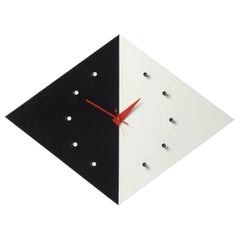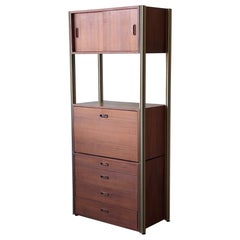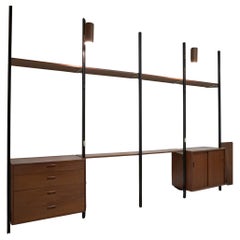George Nelson
Architect, designer, and writer George Nelson was a central figure in the mid-century American modernist design movement; and his thoughts influenced not only the furniture we live with, but also how we live.
Nelson came to design via journalism and literature. Upon receiving his bachelor’s degree in architecture from Yale in 1931, he won the Prix de Rome fellowship, and spent his time in Europe writing magazine articles that helped bring stateside recognition to Ludwig Mies van der Rohe, Gio Ponti, Le Corbusier and other canonical modernist architects.
In the 1940s, Nelson wrote texts that suggested such now-commonplace ideas as open-plan houses, storage walls and family rooms. D.J. De Pree, the owner of the furniture maker Herman Miller, was so impressed by Nelson that in 1944 — following the sudden death of Gilbert Rohde, who had introduced the firm to modern design in the 1930s — he invited Nelson to join the company as its design director. There Nelson’s curatorial design talents came to the fore.
To Herman Miller he brought such eminent creators as Charles and Ray Eames, Isamu Noguchi, and the textile and furniture designer Alexander Girard. Thanks to a clever contract, at the same time as he directed Herman Miller he formed a New York design company, George Nelson & Associates, that sold furniture designs to the Michigan firm. Nelson's studio also sold designs for clocks to the Howard Miller Clock Company, a manufacturer that was initially part of Herman Miller before it became an offshoot that was helmed by Howard Miller, D.J. De Pree's brother-in-law.
Nelson’s New York team of designers (who were rarely individually credited) would create such iconic pieces as the Marshmallow sofa, the Coconut chair, the Ball clock, the Bubble lamp series and the many cabinets and beds that comprise the sleek Thin-Edge line.
For dedicated collectors, as well as for interior designers who look beyond “the look,” there is a “cool factor” inherent to vintage pieces from George Nelson and others. Nelson was in on it from the start, and it’s valuable to have a piece that was there with him.
But still, as is evident from the offerings from dealers on 1stDibs, in any of the designs, in any iteration whose manufacture Nelson oversaw and encouraged, there are shining elements of lightness, elegance, sophistication — and a little bit of swagger. George Nelson felt confident in his ideas about design and didn’t mind letting the world know.
| Average Sold Price |
| $3,447 |
| Styles |
| Materials |
| Related Creators |
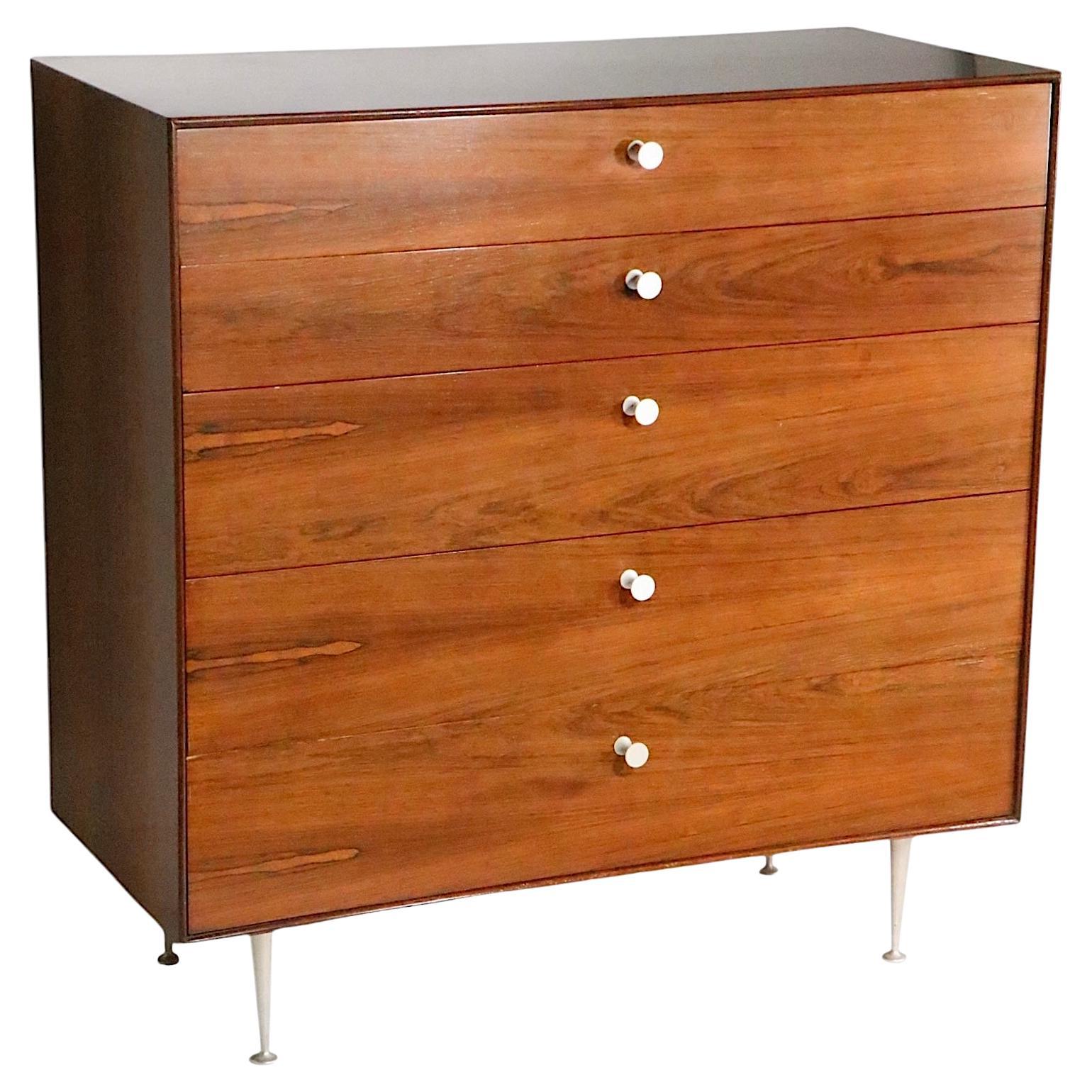

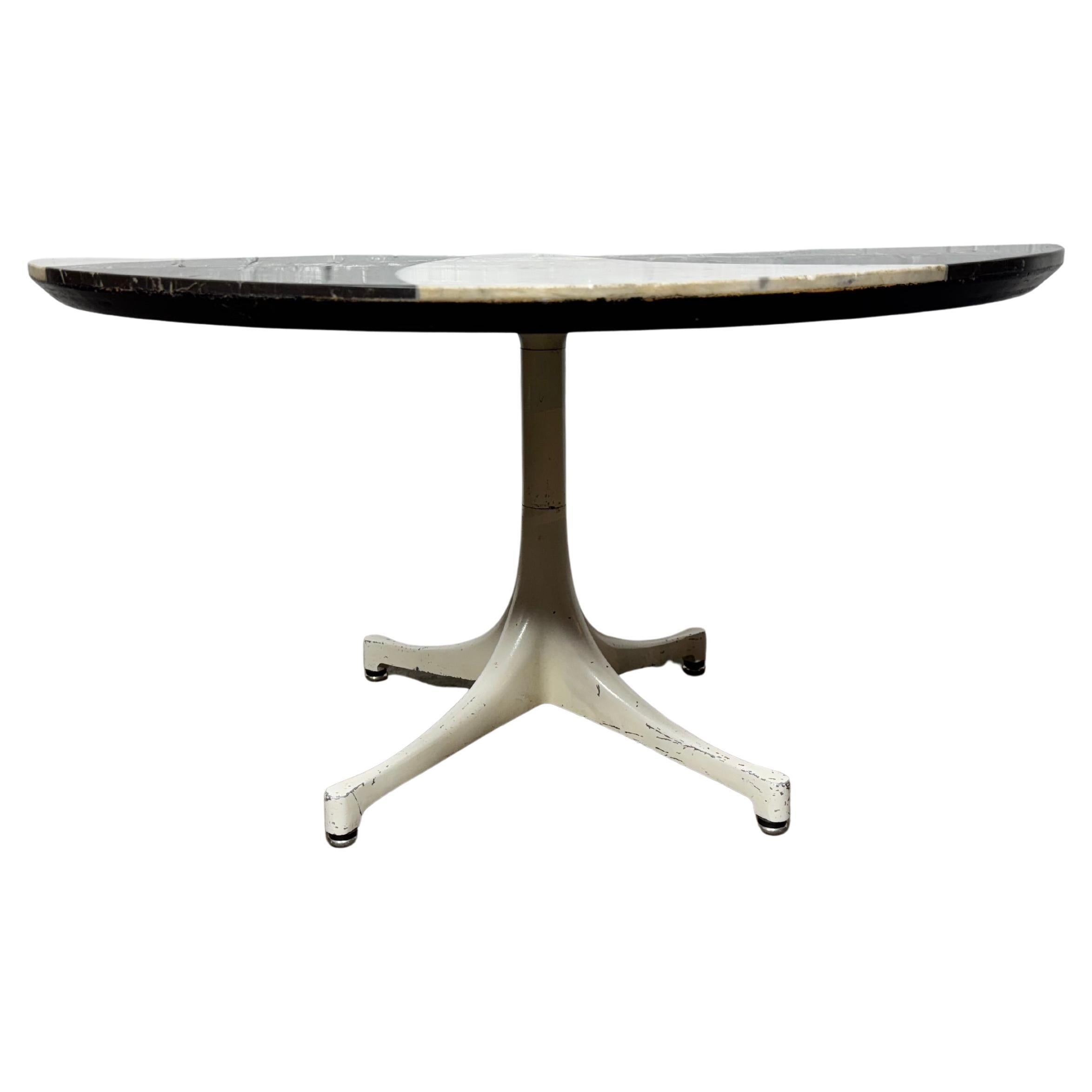
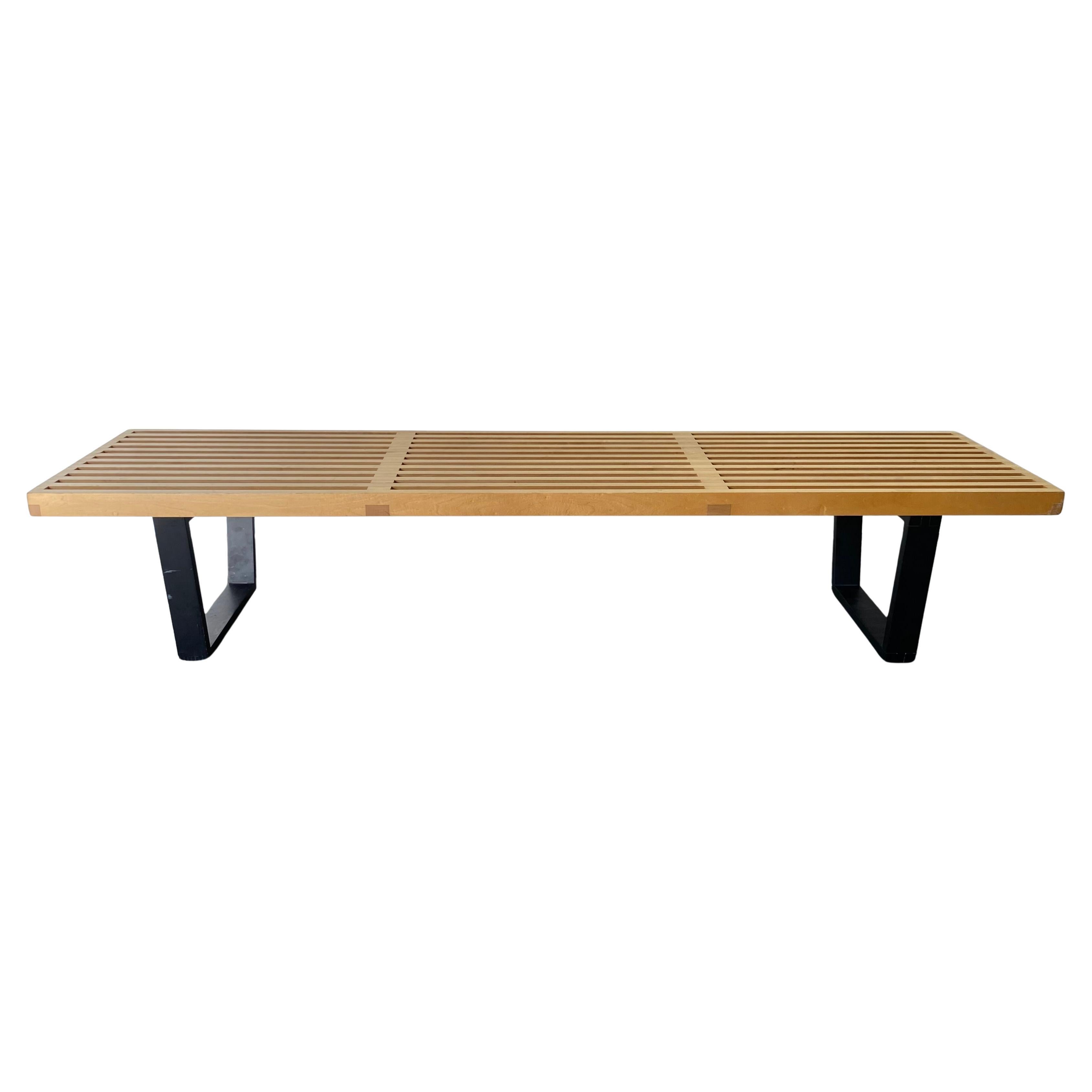
Mid-20th Century American Mid-Century Modern George Nelson
Leather, Wood, Lacquer
21st Century and Contemporary American Mid-Century Modern George Nelson
Wood
1980s Italian Modern Vintage George Nelson
Leather, Plywood
1960s American Mid-Century Modern Vintage George Nelson
Aluminum
Late 20th Century Swiss Mid-Century Modern George Nelson
Aluminum, Brass
1960s American Mid-Century Modern Vintage George Nelson
Maple, Lacquer
1960s American Mid-Century Modern Vintage George Nelson
Aluminum, Chrome
1960s American Mid-Century Modern Vintage George Nelson
Aluminum
Popular Searches
George Nelson Sale Prices
| Sold Date | Sold Price | Category | Material | Creation Year | ||||||||||||||||||||||||||||||||||||||||||||||||||||||||||||||||||||||||||||||||||||||||||||||||
|
| $3,447 |
Average sold price of items in the past 12 months |
| $450-$14,750 |
| Sold price range of items in the past 12 months |
Creators Similar to George Nelson




Read More
A Guide to Herman Miller’s Most Iconic Furniture
The prolific manufacturer has partnered with many of the world’s top designers since opening its doors in 1923. Here are some of the company’s greatest hits, which helped transform the American home and office.
Kule and Forsyth Give Iconic Furniture a Bold Makeover with Stripes
Maggie and Anne Genovese, of Forsyth, teamed up with fashion designer Nikki Kule to reimagine some classic pieces.
George Nelson furniture for sale on 1stDibs.
- Why is George Nelson famous?1 Answer1stDibs ExpertApril 5, 2022George Nelson was an American designer, and for a time the lead designer for the famed Herman Miller furniture company. Nelson is often referred to as the founder of American modernist design and often associated with his more inspired pieces such as the Coconut Chair, Marshmallow Sofa and the Ball Clock. Shop a collection of George Nelson furniture designs from some of the world’s top sellers on 1stDibs.
- What did George Nelson make?1 Answer1stDibs ExpertApril 5, 2022George Nelson was a furniture designer central to the mid-century modern design movement. His best-known creations are the marshmallow sofa, coconut chair, ball clock and bubble lamp series. His style included sleek, thin-edge lines on a variety of furniture still available today. Shop a range of George Nelson furniture designs on 1stDibs.
- 1stDibs ExpertMarch 22, 2022Modern George Nelson clocks are made in Poland. The company Vitra Designs manufactures the timepieces based on the original designs of the American designer who lived from 1908 to 1986. On 1stDibs, you can shop a selection of George Nelson clocks.
- 1stDibs ExpertApril 5, 2022George Nelson Bubble Lamps are made of steel wires, which form a durable framework for the lamp. A plastic polymer material spread over the wires forms the shade which is translucent to give the lamp a soft glow. Inspired by Swedish lamps, these mid-century modern light fixtures are still made by the legendary furniture manufacturer Herman Miller today. Shop a range of George Nelson Bubble Lamps on 1stDibs.
